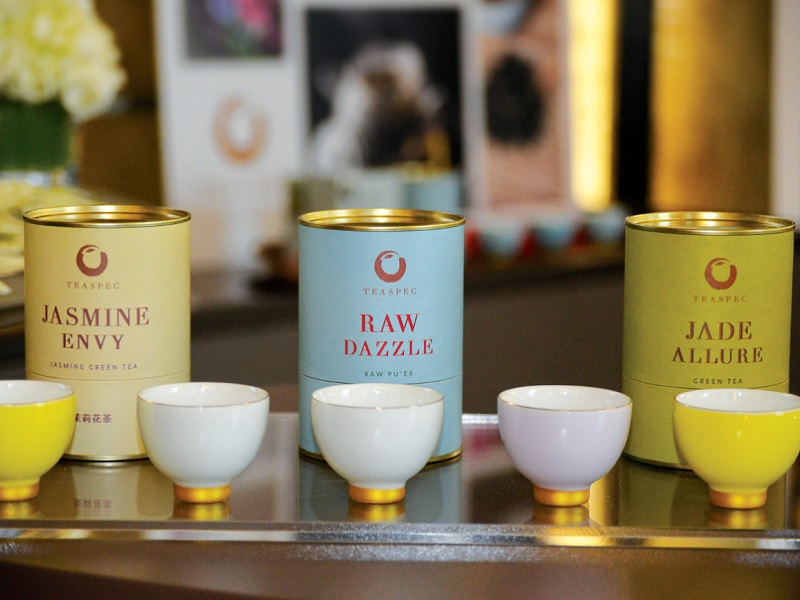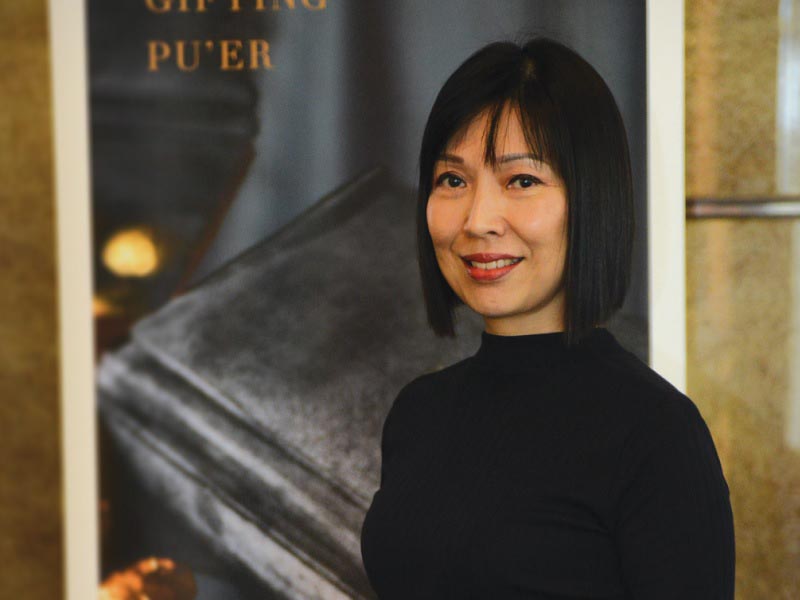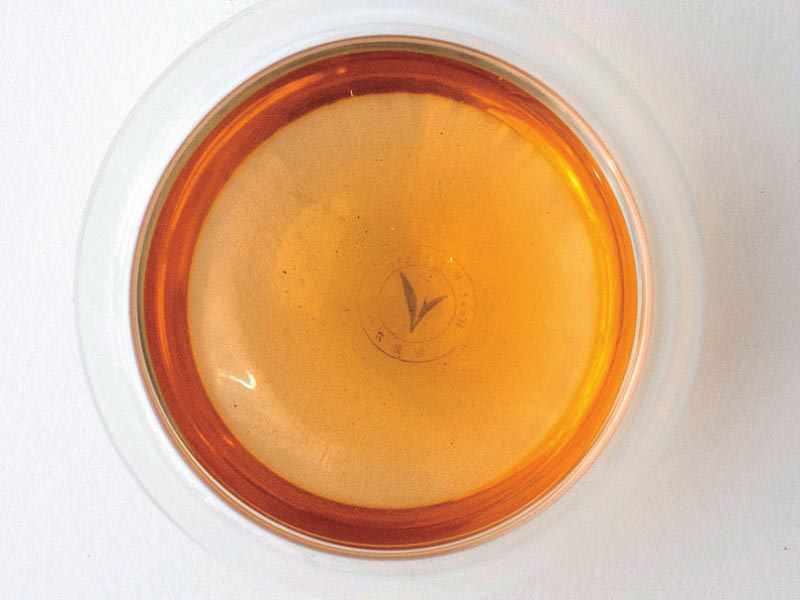True Pu-er: Carole Tan of Teaspec
by Qian Leung
@ 23 Feb 2018

The pu-er you may encounter in traditional Chinese tea houses tends to be dark in colour, like copper turning to bronze. Full-bodied, tannic, with notes of incense, it is perfect for driving away the oiliness of a steamed basket of minced beef balls. Did you know, though, that there is another type of pu-er, which is golden-straw in colour, with hints of genmai cha (green tea with roasted brown rice) and the light umami of seaweed?
Carole Tan of
Teaspec is one woman on a mission to bring a different grade of pu-er beyond the small community that knows of it. “35 years ago, my mother-in-law found that her cholesterol levels fell after drinking pu-er tea consistently,” says Tan, a Singaporean who has lived in Kuala Lumpur for twenty years. “As the years went by, my parents-in-law had amassed a sizable collection of pu-er teas, and on revisiting them each year, were surprised to find that flavours had evolved.” One evening, after dinner, her mother-in-law brewed for her 10-year-old, 15-year-old, and 20-year-old pu-er teas. “She told me that this is raw pu-er.” Apparently, what she had been drinking before, the dark-coloured ones, were ripe pu-er. “I wanted to find out more, and that’s how I embarked on this journey.”

Pu-er is, in fact, the name of a town in southwestern China, Yunnan. 3,000 years ago, tea was compressed into blocks and carried on horseback to Tibet, where it was consumed by local monks. As payment for the tea, horses were brought down from the remote region, giving the route the name, ‘Ancient Road of Tea and Horses’. The route was only discontinued in the 1950s. “Did you know, for 3,000 years, it has always been raw pu-er,” says Tan. “Ripe pu-er didn’t come about until the 1970s.” If you have tried pu-er which you don’t like, give raw pu-er a try. Start with the ‘discovery’ range, such as opus raw, pyramid silken sachets of unfermented raw pu-er, with smoky floral notes over a core of fruity and savoury concentration. You can then move on to loose leaf tea, such as raw dazzle. Add a small amount of the raw pu-er to a tea pot with a strainer, add hot water, and let steep for 30 – 60 seconds. A teapot with an infuser, named lazy pour, is available from Teaspec.

“To reap the anti-inflammatory and weight-loss benefits of pu-er, you need to drink it every day, not once in a blue moon,” says Tan. “And that’s why we have this tea pot. It’s an easy way of brewing, so you can enjoy good tea, even if you’re busy, and don’t have much time.” When you are ready to appreciate pu-er the traditional way, try the compressed tea. Each cake comes with a tea needle, as you only need a small amount, about 3 grammes per person, each time you brew. The cake can then be resealed in its silver foil lined bag, for proper storing. “Even for the loose tea, we have requested the tea estates to use tea leaves from old trees,” says Tan. The mellowness and complexity of the tea can be affected by the length of aging, as well as the age of the trees from which the leaves are picked. “Even though some of our pu-er has not been aged, it doesn’t taste as tannic as those from young trees.”

Tan sees herself as the guardian of knowledge about pu-er tea, which will ultimately be passed down to her children and grandchildren. Over the years, the collection that Tan’s parents-in-law had amassed, originally for their personal consumption, has grown in value. This is because growers don’t keep their old harvests, and as time passes, the old vintages become more and more difficult to find. “This is why people call pu-er a drinkable antique,” says Tan. “When you drink pu-er, you’re really drinking time.”
Adapted from
Jan Feb 18 issue of Cuisine & Wine Asia.
 The pu-er you may encounter in traditional Chinese tea houses tends to be dark in colour, like copper turning to bronze. Full-bodied, tannic, with notes of incense, it is perfect for driving away the oiliness of a steamed basket of minced beef balls. Did you know, though, that there is another type of pu-er, which is golden-straw in colour, with hints of genmai cha (green tea with roasted brown rice) and the light umami of seaweed?
The pu-er you may encounter in traditional Chinese tea houses tends to be dark in colour, like copper turning to bronze. Full-bodied, tannic, with notes of incense, it is perfect for driving away the oiliness of a steamed basket of minced beef balls. Did you know, though, that there is another type of pu-er, which is golden-straw in colour, with hints of genmai cha (green tea with roasted brown rice) and the light umami of seaweed?

